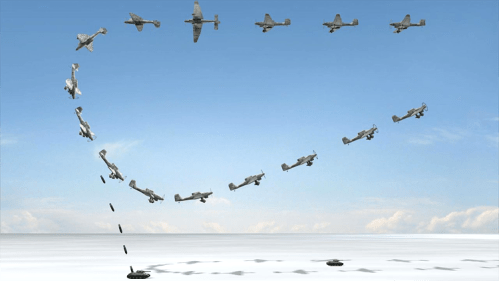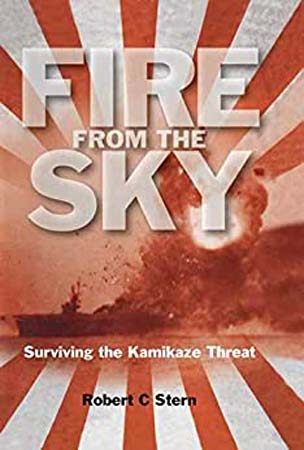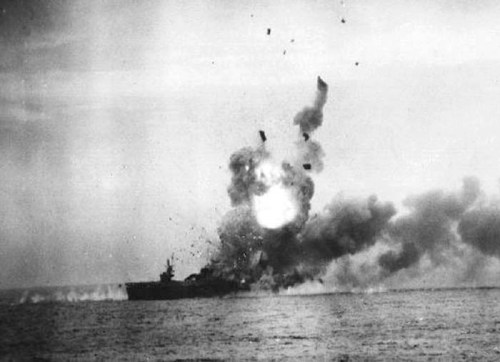Last time I was telling you how I had read a splendid book called “Fire from the Sky” by Robert C Stern. The book traces the history of the Japanese kamikaze attacks which began in the Philippines in 1944. It is an excellent and informative book which, clearly, has been extensively researched.
Experience quickly taught the Japanese that attaching two bombs of around 250-500 pounds, depending on the aircraft, could cause a lot more damage than the aircraft itself, particularly if it was only a small plane such as a Zero. The bombs were never released but they were always live. The best places to aim were directly down the funnel or at the base of the funnel. This ship off Okinawa has had damage done to the boilers, presumably via the vulnerable funnel:
Alternatively, the bridge was a good target because it was full of officers. The absolute best target, though, was to seek out an aircraft carrier and to aim the aircraft and bombs at the elevator because this gave access to the inside of the ship. And below decks there might well be an explosive mixture of “aviation fuel” and air. Certainly fire was the main weapon needed to cause large scale damage inside an aircraft carrier. And those two bombs, as well as blowing out partition walls, might also start the very fire needed to damage such a big ship.
The very, very best time to strike was when the US Navy fighters had just returned from combat and were being “safed” which I presume means pumping out the unused avgas and removing any hung-up bombs. Even better, perhaps, was that moment seconds before takeoff, when everybody was ready, propellers spinning, bombs armed, full fuel with perhaps drop tanks too, and all the aircraft, by necessity, extremely close to each other.
This attack was clearly aimed at both the flight deck and the elevator. The ship is the USS Bunker Hill:
Diving an aircraft down to hit a target on the sea is apparently not the most simple of manoeuvres, and the best kamikaze pilots were capable of flipping their aircraft over upside down so that they could see the target clearly as they dived down to hit it. You can see this manoeuvre on the old films of Stuka dive bombers. Here is the version produced for the Luftwaffe Ballroom Dancing Team:

Defenders soon realised what a kamikaze pilot was trying to do, and they soon realised too that machine gun fire and cannon fire was comforting for the people on the ship but of virtually no value whatsoever. Most effective were five inch guns or bigger because the plane would need to be disintegrated to stop it carrying out its mission. On occasion, aircraft still caused large amounts of damage after their wings had been shot off.
It was extremely rare for kamikazes to sink big ships or even to damage them greatly. Much more likely prey were landing craft or the radar pickets protecting the fleet. Smaller ships could not absorb the combination of speed and explosive power. They were either sunk completely or suffered huge casualties. On one occasion a kamikaze blew fifty men off the deck of a warship and none of them were ever seen again.
In one chapter, author Robert Stern lists the casualties for all of the ships attacked between November 27th-December 28th 1944. The first figure represents the men killed and the second figure the men wounded. Thus we have the St Lo with 16 killed and 21 wounded. Here it is:
The Colorado had 19 killed and 72 wounded, the Maryland 31 killed and 30 wounded, the Aulick 31 killed and 64 wounded, the Drayton 6 killed and 12 wounded, the Mugford 8 killed and 14 wounded, the Lamson 25 killed and 54 wounded, the Liddle 38 killed and 20 wounded. The Hughes had none killed but 73 were wounded, the Caldwell had 33 killed and 40 wounded, the Nashville had 133 killed and 190 wounded, the Haraden had 14 killed and 24 wounded, the Orestes had 59 killed and 110 wounded, the Pringle had 11 killed and 20 wounded, LST 472 had 6 killed and 50 wounded and the two LSTs, Nos 460 and 749, had 107 killed.
And from the Japanese point of view, that is an excellent return for the lives of a relatively small number of men.








